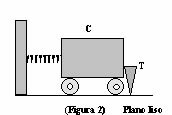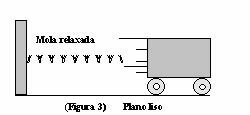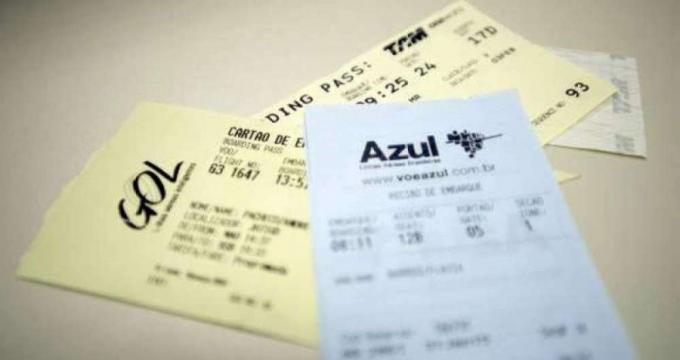There is no definition of what energy is, but we know that its existence makes work possible. The energy stored in food, for example, makes a person's body organs function properly. Fuels make motor vehicles move. Likewise, the electrical energy produced by the battery causes the electrons in the energy-conducting wires to move around.
When talking about energy, it is extremely important to emphasize the Energy Conservation Principle. This principle, according to Lavoisier, says: “In nature nothing is lost, nothing is created, everything is transformed”.
In order to exemplify energy conversions in general, let us consider a relaxed spring (figure 1), that is, a spring that is not stretched. Look:



To compress the spring requires energy. Thus, a force is applied to one of its ends, so that it contracts. We say that by applying force on the spring, work is done. This work corresponds to the energy transferred from the person to the spring. Figure 2 represents the spring already compressed and with a lock on the cart, preventing it from being released.
The compressed spring stores energy. This energy, however, can only be manifested by removing the lock from the cart. The energy stored in the spring is called Elastic Potential Energy. Potential because it can manifest itself and elastic because it is in a deformed elastic body.
Now, looking at Figure 3, we notice that the cart has freed itself. When the lock was removed, the potential energy that was stored in the spring manifested itself, causing the cart to acquire movement. Again we have the work done. Now this work corresponds to the energy transferred from the spring to the cart. The energy that the cart has acquired is called Kinetic Energy.
Kinetic energy: it is the energy that is related to the movement of bodies.
Potential Energy (gravitational, elastic, electrical, etc.): it is the energy a body has in relation to the particular position it occupies.
In the absence of friction, the total mechanical energy of a system is conserved, with only the transformation of potential energy into kinetic energy and vice versa. Look:
ANDmec= ANDç + ANDP
It is of great importance to make it clear that work and forms of energy are scalar quantities.
work of a force
Work is the measure of the energy that is transferred to a body, due to the application of a force along a displacement. In Physics, work is usually represented by W (which comes from the English work) or more commonly the Greek letter tau
 .
.To calculate the work of a force, it is important to emphasize that it can be:
Work of a constant force parallel to displacement: is calculated when you have the force being applied in the same direction as the displacement. It can be calculated as follows:

Since the angle between the force and displacement is zero, it makes the cosine of this angle equal to 1, making the expression equivalent to:

Where D is the displacement suffered by the body.
Work of a constant force and not parallel to the displacement:

When we have the application of constant force and not parallel, as in the above scheme, we calculate the work as follows:

At where? it is the angle formed between the force and the displacement suffered by the body.
In the SI (International System of Units) work is given in joule, which is represented by the letter (J) and the force is given in newton (N). This unit is named after British physicist James Prescott Joule. In the CGS system, the unit of work is erg = dyne x centimeter.
By Marco Aurélio da Silva
Brazil School Team

